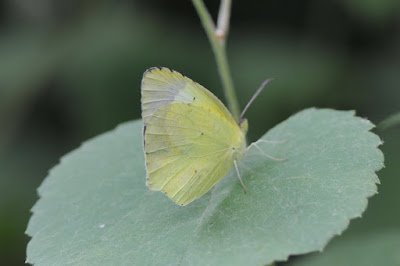I finally managed to get out of the house and check out some butterflies this weekend. Location? All of these came from Lucas County and Appanoose County, both in southern Iowa.
I was most pleased to finally find a MEADOW FRITILLARY at Colyn SWA in Lucas County. Turns out, I probably ended the day with 5-7. Here is one:
It wasn't very surprising that FIERY SKIPPERS were common throughout the day:
Now that I'm actually looking more carefully at the pictures (as I make this blog)... I wonder if this skipper might actually be a Sachem? I don't have much experience with Sachems unfortunately. Any thoughts?

I almost wanted to make the following butterflies into European Skippers (a bfly I have yet to see) but logic got the best of me and I accepted the fact that they were just the common LEAST SKIPPERS. Apparently European Skippers don't fly this late in the season here.
I absolutely loved the evening light while photographing various sulphurs & yellows at Sedan Bottoms. I was amazed at how the yellow in these guys just seemed to pop out with the right light. Here is a LITTLE YELLOW:
Is the LITTLE YELLOW actually little? Well, stick one of the giant sulphurs in front of it!
Overall, it was a fairly productive day for butterflies even though my target was actually finding birds. Although I didn't keep track of what I saw, I'll put down the species I had and in order from most abundant to rarest (for the day):
Common Buckeye
Clouded/Orange Sulphur
Black Swallowtail
Eastern Tailed-Blue
Monarch
Pearl Crescent
Little Yellow
Fiery Skipper
Meadow Fritillary
Least Skipper
Viceroy
Eastern Tiger-Swallowtail
Painted Lady
Red Admiral
Cabbage White
Question MarkRed-spotted Purple
Gray Hairstreak
Sachem?


.JPG)

















